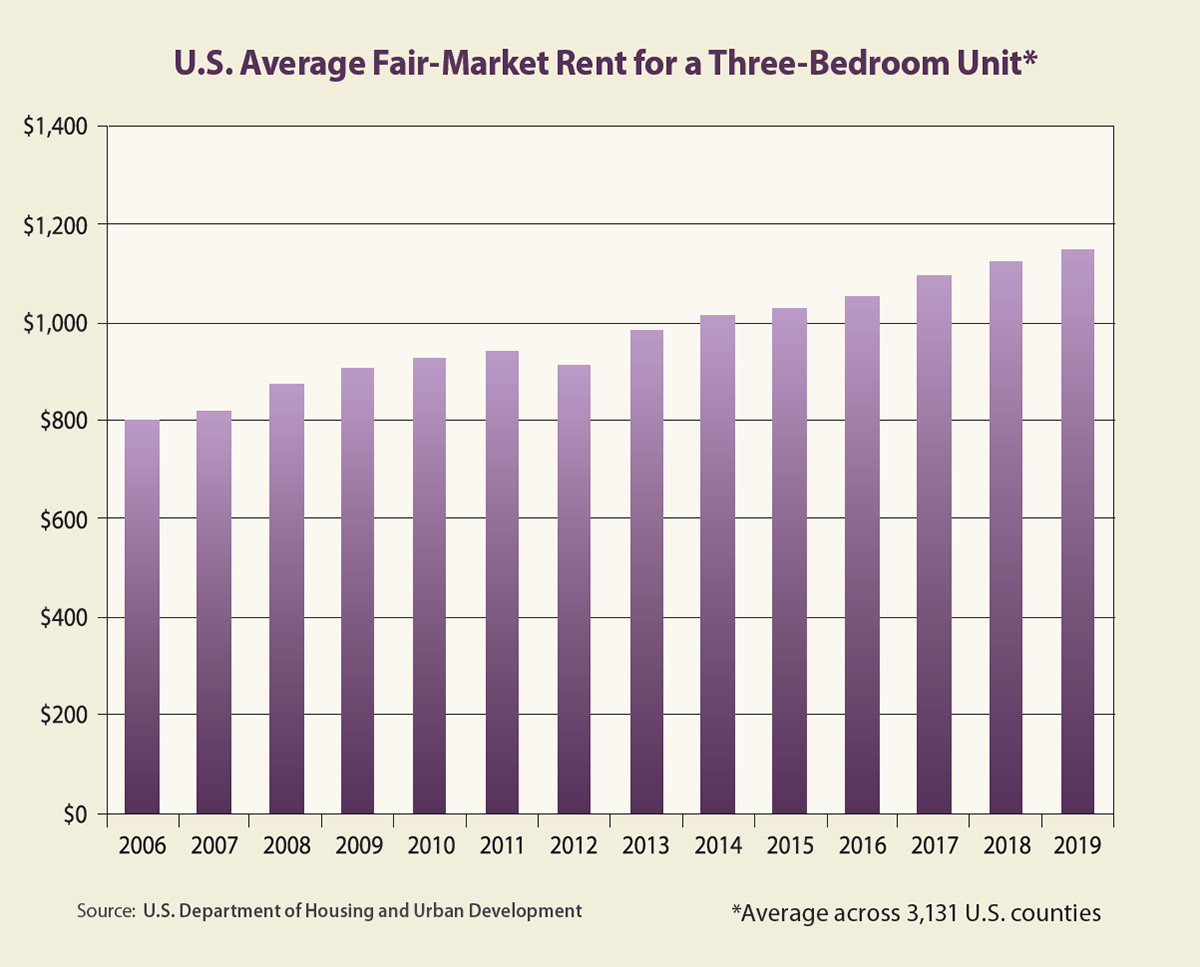Renting is now officially more affordable than buying a home in the majority of local U.S. housing markets, according to Attom Data Solutions research. A smaller share of average wages were needed to rent than to own in 442 of 755 counties analyzed (59 percent) in the company’s 2019 Rental Affordability Report.
Last year, the reverse was true — buying a home was more affordable than renting in most local U.S. markets (54 percent), according to Attom, which includes property taxes and insurance in its calculations for buying a home.
Rising mortgage rates are the primary driving force behind this shift toward renting. The average 30-year fixed mortgage rate was up 29 percent year over year as of November 2018.
Rising mortgage rates don’t tell the entire story, however. Although home-price appreciation is slowing in response to the worsening affordability environment, home prices continued to rise at a faster pace than wages — and rents — in the clear majority of U.S. counties. Median home prices increased faster than average weekly wages over the past year in 601 of the 755 counties analyzed (80 percent).
This trend in wage growth outpacing home-price growth bodes well for purchase-mortgage demand in the minority of markets where this trend is occurring. Still, even in those markets, renting tends to be more affordable than buying. It was still more affordable to rent than to buy in 82 of the 154 counties where wage growth outpaced home-price growth.
The bias toward renting is rooted in the fact that home-price growth also continued to outpace rent growth in 2018 in most local U.S. markets — 531 of the 755 counties analyzed in the Attom report.
The nature of rents is that they typically continue to rise steadily, even through economic downturns, because people still need a place to live — even if they are not able or willing to commit to taking on debt to buy a home. That slow and steady rent growth continued for the most part in the wake of the Great Recession, even as home prices cratered, tipping the balance of affordability in favor of buying for about seven years.
We’ve now reached a tipping point in this housing-market growth cycle, however, where the rapid rise in home prices over the last seven years has finally overtaken the gradual growth in rents, causing affordability to shift back in favor of renting.
That tipping point will likely push more prospective homebuyers back toward renting in 2019, weakening demand for owner-occupied purchase mortgages and strengthening demand for both multifamily properties and single-family rentals.
Because rent growth aligns more closely with wage growth, the underlying fundamentals are stronger for the rental market going into 2019. Across the 755 counties analyzed in the Attom report, the average growth in wages was 2.9 percent, while the average growth in fair-market rents was 3.5 percent, and the average growth in median home prices was 6.7 percent. Those trends translate into a smaller share of wages needed to rent (38 percent) than to buy (42.8 percent) on average across the 755 counties.
All this adds up to a 2019 that will likely see tepid demand for owner-occupant mortgages, similar to the 2018 market. Refinance demand will likely be significantly weaker than purchase demand because of rising rates, but the overall owner-occupied housing market will most likely cool because of the ongoing affordability challenges for owner-occupant buyers.
Meanwhile, nonowner-occupant buyers are less constrained by affordability and will likely see the increased rental demand, combined with softening home prices, as an opportunity to buy more multifamily and single-family rentals. Demand for mortgages on these asset classes should strengthen in 2019, so lenders and originators should at least consider pivoting toward these markets in the coming year.
Author
-

Todd Teta is chief product and technology officer at Attom Data Solutions, where he leads the company’s technology and product teams. Prior to joining Attom Data Solutions, Teta led the product-development and technology organization at Meyers Research. Teta also previously co-founded several startups, including VisionCore, a company serving the mortgage and real estate data and analytics markets that was later sold to CoreLogic. He is a graduate of the University of Southern California, where he earned a degree in computer engineering and computer science. Learn more about Attom Data Solutions at attomdata.com.
View all posts







